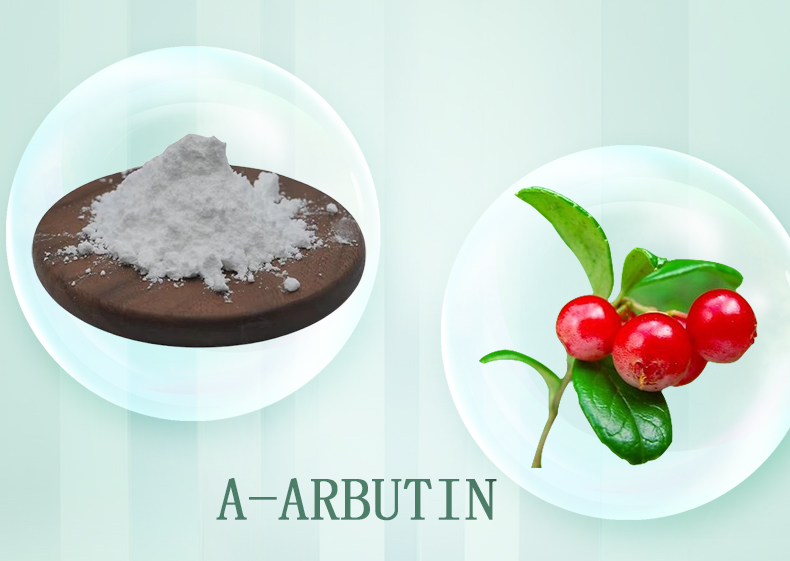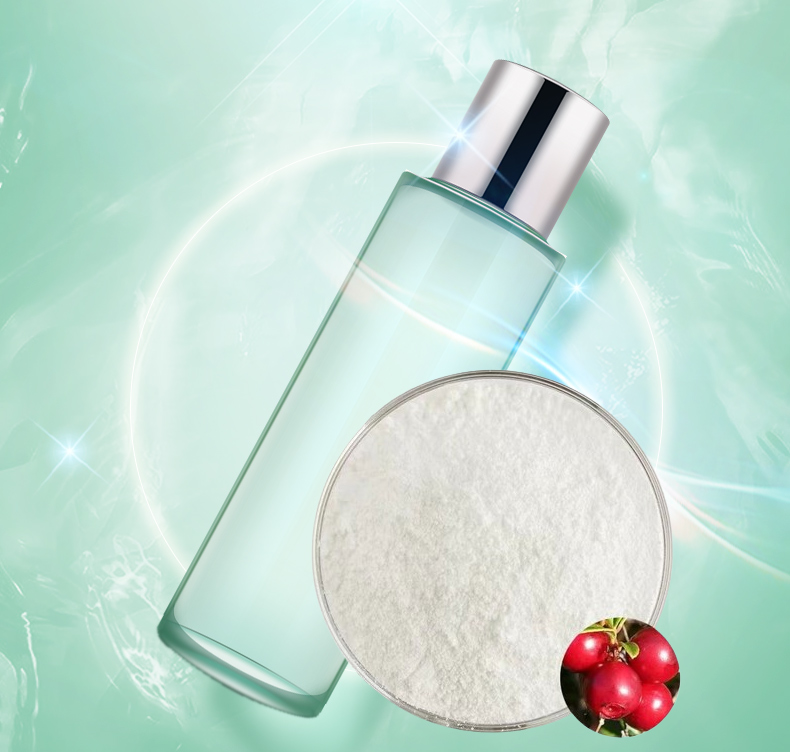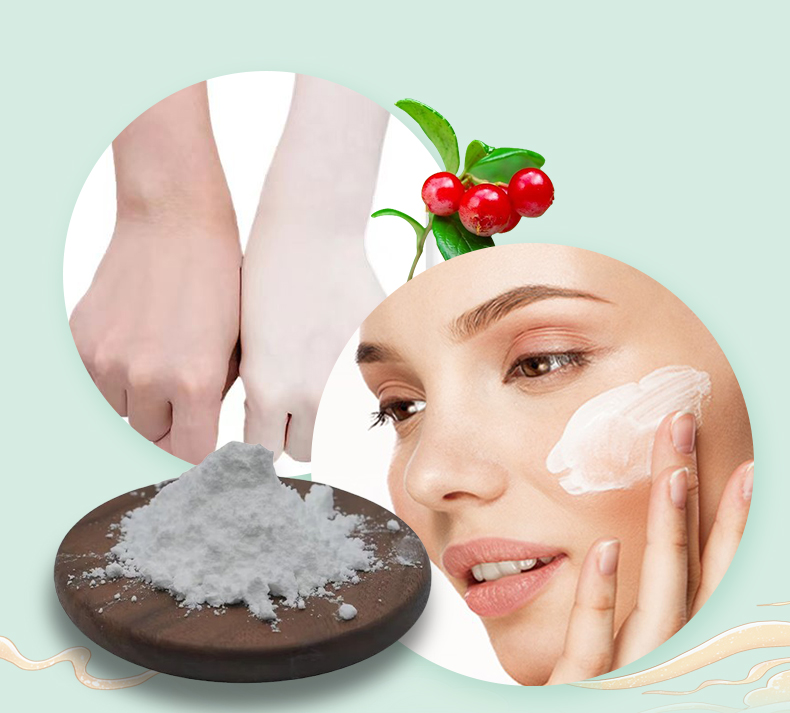Foaming thickening
Sterilization
Cosmetic Raw
Oilfield Chemistry
Industrial wetting
Featured Products
Daily chemical raw material

Contact us

0838-5406221
Mobile phone:13438162399
QQ:38768984
Mail:38768984@qq.com
Addr:Guanghan, Sichuan
-
Arbutin
name: Arbutin
Foreign name: hydroquinone O-β-D-glucopyranoside
Other names: p-hydroxyphenyl-β-D-pyranose glucoside, arbutin
Chemical formula: C12H16O7
Molecular weight: 272.251
CAS registration number: 497-76-7
EINECS registration number: 207-850-3
Melting point: 195 to 198 ℃
Boiling point: 561.6 ℃
Water solubility: soluble
Density: 1.556 g/cm³
Appearance: white crystalline powder
Flash point: 293.4 ℃
Application: cosmetics
National Service Hotline:13438162399
Arbutin, also known as arbutin, appears as white needle-shaped crystals or powder. It was first obtained from the leaves
of bearberry, a plant in the Rhododendron family. It can prevent the production of melanin by inhibiting the activity of
tyrosinase in the body, thereby reducing skin pigmentation, removing spots and freckles, and also has bactericidal and
anti-inflammatory effects.
Whitening and lightening Arbutin inhibits the activity of tyrosinase, reduces melanin production, helps lighten spots, and has a whitening effect. |  |
 | Anti-inflammatory repair Arbutin also has analgesic and anti-inflammatory effects. The main raw material of common burn and scald medicines includes arbutin. If it is applied to the burned area, it can effectively reduce inflammation and swelling, and speed up wound healing. |
Main functions The main function of arbutin is whitening. Because its structure is similar to tyrosine, it can compete with tyrosine and confuse tyrosinase to bind to it. This is equivalent to inhibiting the activity of tyrosinase, thereby reducing melanin formation |  |




 38768984
38768984 38768984@qq.com
38768984@qq.com Guanghan, Sichuan
Guanghan, Sichuan Focus on us
Focus on us
 Mobile website
Mobile website